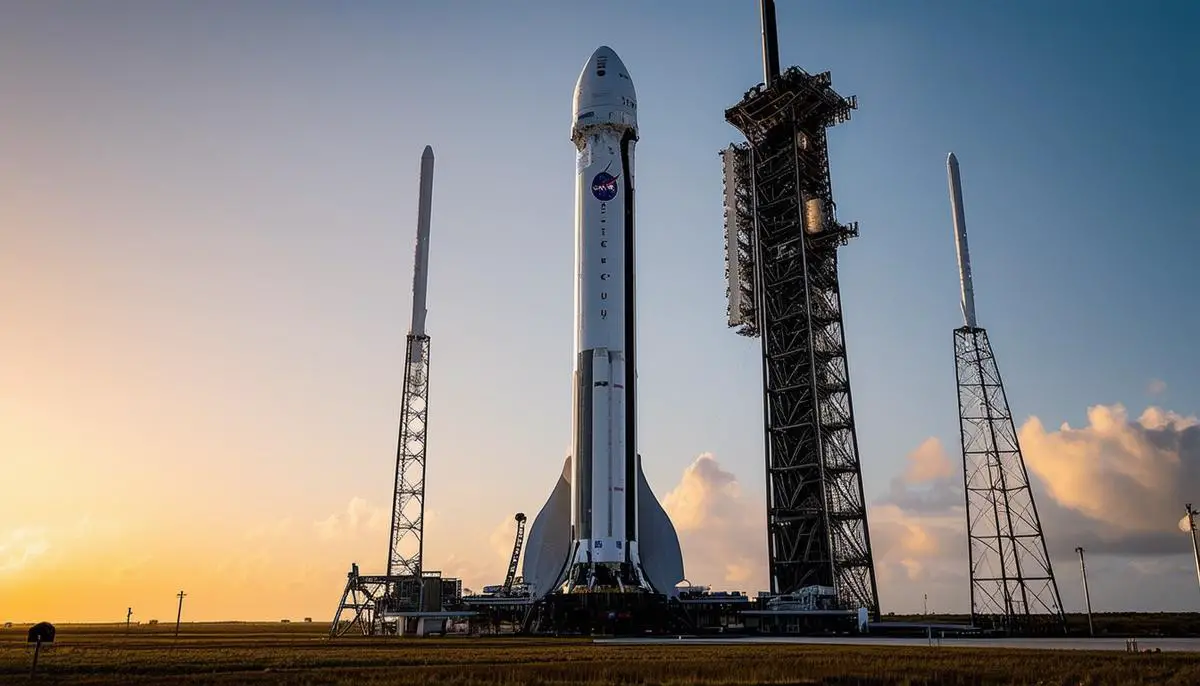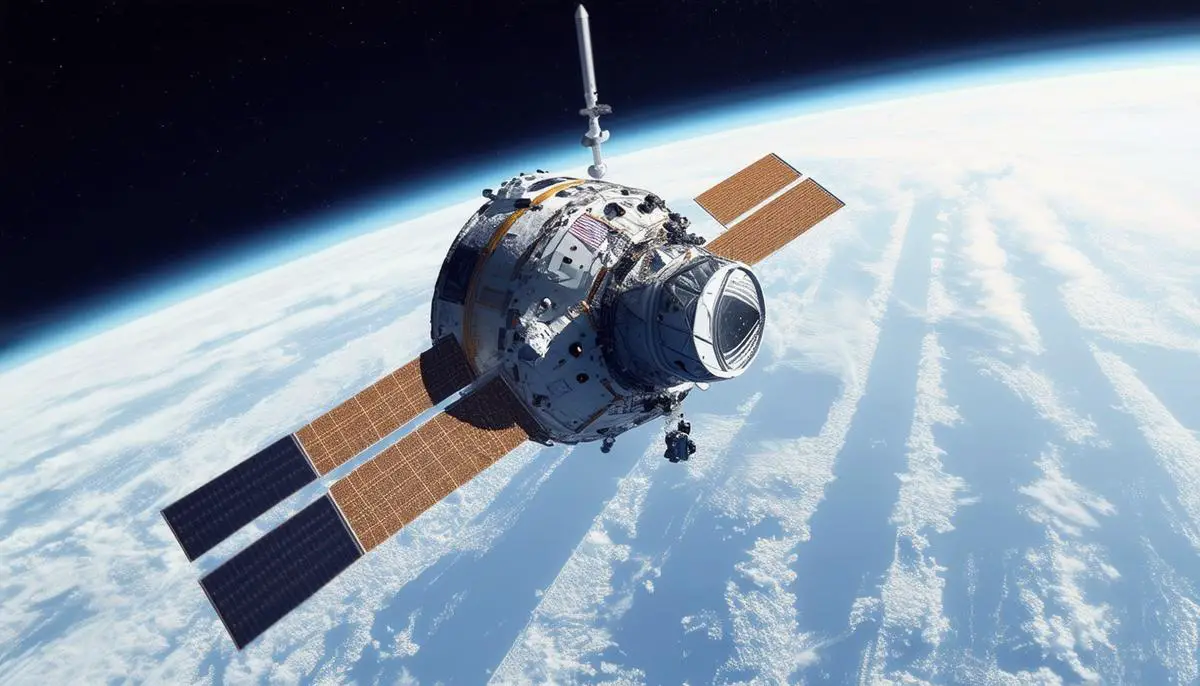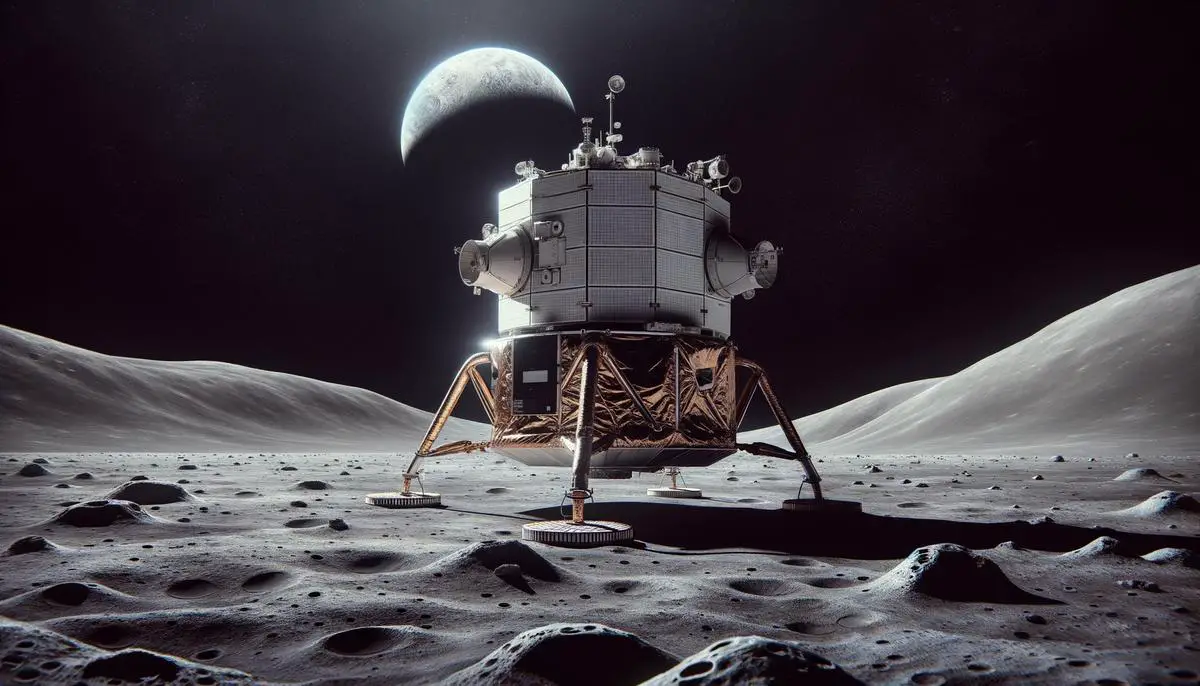Crew-8 Mission to the International Space Station
The Crew-8 mission to the International Space Station launches on March 2, 2024, aboard a SpaceX Falcon 9 rocket from NASA's Kennedy Space Center in Cape Canaveral, Florida. The Falcon 9 will transport the Endeavour Dragon capsule carrying four astronauts:
- NASA's Matthew Dominick (Commander)
- Michael Barrett (Pilot)
- Jeanette Epps (Mission Specialist)
- Russian cosmonaut Alexander Grebenkin (Mission Specialist)
The crew has completed rigorous training for their six-month expedition. Preparations involve a dress rehearsal and a "hot-fire" test of the Falcon 9's first stage engines. Ken Bowersox, NASA's associate administrator for space operations, emphasized the importance of monitoring all systems before launch.
Crew-8 experienced delays due to a private moon launch and adverse weather. Steve Stich, NASA's Commercial Crew Program manager, highlighted ongoing reviews of composite material fasteners and paint discoloration on the Crew-7 Dragon capsule docked at the ISS. Both issues will be resolved before flight.
Endeavour, the Dragon capsule for Crew-8, embarks on its fifth mission, demonstrating SpaceX's reusable spacecraft capabilities. NASA is working to certify these capsules for up to 15 spaceflights.
The Crew-8 astronauts will relieve the Crew-7 team aboard the ISS. During their mission, they will conduct scientific experiments and operational tasks crucial for ongoing space research, contributing to our understanding of space's effects on the human body and aiding in preparation for longer missions.
NASA and SpaceX's collaboration exemplifies the pioneering spirit driving today's space exploration, marking a continuation of successful partnerships and a look toward the future of routine space travel.

SpaceX Awarded Contract for ISS Deorbit Mission
NASA recently awarded SpaceX an $843 million contract for the ISS deorbit mission, a crucial initiative to safely conclude the International Space Station's operations by 2030. This mission underscores NASA's commitment to responsible space operations and marks a new chapter in commercial space endeavors.
Central to this task is SpaceX's development of the U.S. Deorbit Vehicle (USDV), a purpose-built spacecraft designed to guide the ISS back to Earth. Unlike the multifunctional Dragon capsule, the USDV is equipped with advanced technologies to manage a controlled descent, ensuring the ISS disintegrates over remote areas to mitigate risks to populated regions.
Key Features of the USDV:
- Precision thrusters
- Advanced guidance systems
- Specialized design for controlled descent
NASA's decision to collaborate with SpaceX reflects the trust in their capabilities, built on a track record of successful missions since their first Dragon launch. The $843 million contract covers the design, development, and production of the USDV.
This mission also sets the stage for the transition to commercial space stations in low Earth orbit (LEO). Companies like Axiom Space are already working on building and operating these new platforms, expanding possibilities for scientific discovery and economic growth in space.
"SpaceX's role in this transition is crucial, not only in securing the last chapter of the ISS but also in bridging to future space endeavors."
As we approach 2030, the focus will be on both the safe de-orbiting of the ISS and the sustainable expansion into commercial space activities, domains where SpaceX will undoubtedly remain a key player.

Private Moon-Landing Mission
In January 2024, Intuitive Machines is set to launch its NASA-funded IM-1 mission, targeting the lunar south pole. This mission, launching aboard a SpaceX Falcon 9 rocket from Cape Canaveral Space Force Station, marks a significant milestone in NASA's Commercial Lunar Payload Services (CLPS) initiative. The IM-1 mission aims to place the Nova-C lander on the rim of Malapert A crater, a region of scientific interest due to potential water ice deposits1.
Nova-C Lander Specifications:
- Height: Approximately 13 feet
- Shape: Hexagonal cylinder
- Payload: Five NASA science instruments
Steve Altemus, Intuitive Machines' co-founder, emphasized the collaborative efforts with SpaceX to manage the challenges of lunar missions. The IM-1 mission serves as a precursor for NASA's Artemis program, particularly the Artemis 3 mission aiming to return humans to the moon by 2025.
In the competitive landscape of lunar exploration, Astrobotic's Peregrine lander, slated for a December 2023 launch, represents a key rival in NASA's CLPS initiative. Both missions are pivotal for demonstrating the capabilities of commercial lunar landers.
The broader implications of the IM-1 mission for future human spaceflight are significant. By providing real-world experience in landing large payloads on the lunar surface, it sets a precedent for subsequent missions under the Artemis program. The successful execution of IM-1 could catalyze further commercial investments, fostering a thriving lunar economy enriched by scientific and industrial endeavors2.
Intuitive Machines' partnership with SpaceX, alongside NASA's strategic vision, exemplifies the dynamic interplay between commercial and governmental entities in advancing space exploration. As we approach 2024, anticipation builds for this landmark mission, promising an era where commercial and scientific objectives converge on the lunar surface.

- Gebhardt C. Intuitive Machines IM-1 mission prepares for first private Moon landing. NASASpaceflight. 2023.
- Foust J. NASA selects Intuitive Machines for CLPS lunar landing mission. SpaceNews. 2022.
![]()